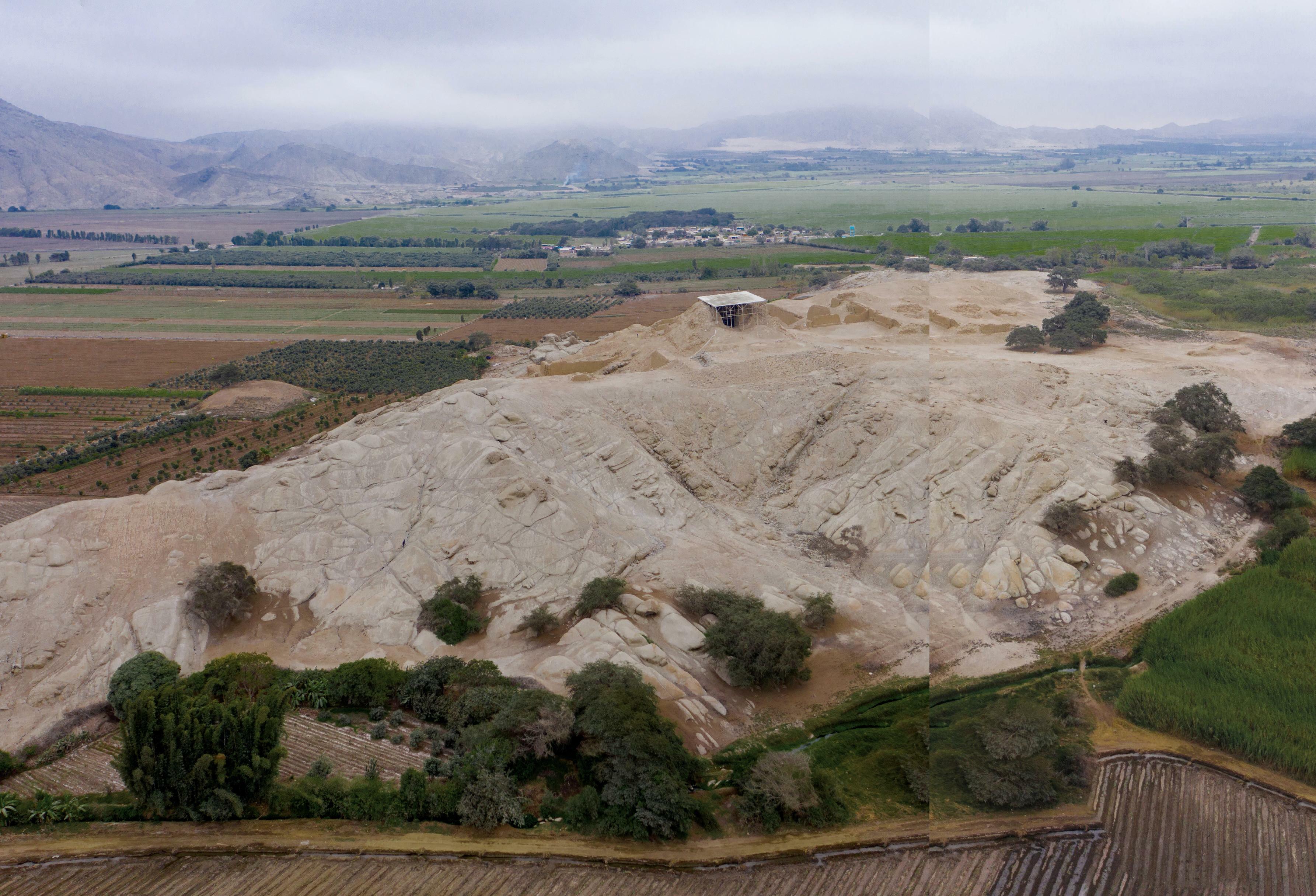
THE MAKING OF A MOCHE QUEEN Pañamarca, Peru
At the site of Panamarca, a monumental A center belonging to the Moche people, who controlled northern Peru's coastal valleys between around A.D. 350 and 850, archaeologists have discovered the first evidence of a throne room designed for a Moche queen. While working in a large pillared hall, a team led by archaeologists Jessica Ortiz Zevallos of the Archaeological Landscapes of Pañamarca program, Lisa Trever of Columbia University, and Michele Koons of the Denver Museum of Nature & Science unearthed extremely well-preserved murals executed in vivid blue, red, and yellow depicting four scenes that highlight a powerful woman. One panel shows the woman receiving a procession of visitors, and in another, she is seated on a throne.
Even more stunning than the paintings is physical evidence of an adobe throne whose back support is eroded from having been leaned against. The team found greenstone beads, fine threads, and even a human hair all embedded in the throne's surface. "A real, living person occupied this throne in the seventh century A.D., and all the evidence suggests that this leader was a woman," says Trever. The paintings, therefore, are not just storytelling.
"We have a lot of evidence of powerful women in Moche culture who are usually referred to as priestesses. But what we have here is someone who had a seat of political power," says Koons. "This makes us rethink our notions of gender roles in the Moche world and suggests that their society may have been more fluid than previously thought. We've never seen a queen's throne room at Pañamarca, or anywhere else in ancient Peru." -JARRETT A. LOBELL
REINDEER HUNTERS' WALL
Bay of Mecklenburg, Baltic Sea
هذه القصة مأخوذة من طبعة January/February 2025 من Archaeology.
ابدأ النسخة التجريبية المجانية من Magzter GOLD لمدة 7 أيام للوصول إلى آلاف القصص المتميزة المنسقة وأكثر من 9,000 مجلة وصحيفة.
بالفعل مشترك ? تسجيل الدخول
هذه القصة مأخوذة من طبعة January/February 2025 من Archaeology.
ابدأ النسخة التجريبية المجانية من Magzter GOLD لمدة 7 أيام للوصول إلى آلاف القصص المتميزة المنسقة وأكثر من 9,000 مجلة وصحيفة.
بالفعل مشترك? تسجيل الدخول

ORIGINS OF PERUVIAN RELIGION
While investigating looters' holes at the site of La Otra Banda in northern Peru's Zaña Valley, archaeologist Luis A. Muro Ynoñán of the Field Museum and the Pontifical Catholic University of Peru spotted carved blocks around seven feet below the surface.

ISLAND OF FREEDOM
Many of the enslaved Africans sent to Brazil beginning in 1549 were from what is now Angola, where one of the most widely spoken languages was Kimbundu.

NAZCA GHOST GLYPHS
From the 1940s to the early 2000s, geoglyphs were discovered in the Nazca Desert of southern Peru depicting animals, humans, and other figures at the rate of 1.5 per year.

COLONIAL COMPANIONS
The ancestry of dogs in seventeenth-century Jamestown offers a window into social dynamics between Indigenous people and early colonists.

BAD MOON RISING
The British Museum houses around 130,000 clay tablets from ancient Mesopotamia written in cuneiform script between 3200 B.C. and the first century A.D.

DANCING DAYS OF THE MAYA
In the mountains of Guatemala, murals depict elaborate performances combining Catholic and Indigenous traditions

LOST GREEK TRAGEDIES REVIVED
How a scholar discovered passages from a great Athenian playwright on a discarded papyrus

Medieval England's Coveted Cargo
Archaeologists dive on a ship laden with marble bound for the kingdom's grandest cathedrals

Unearthing a Forgotten Roman Town
A stretch of Italian farmland concealed one of the small cities that powered the empire

TOP 10 DISCOVERIES OF 2024
ARCHAEOLOGY magazine reveals the year's most exciting finds